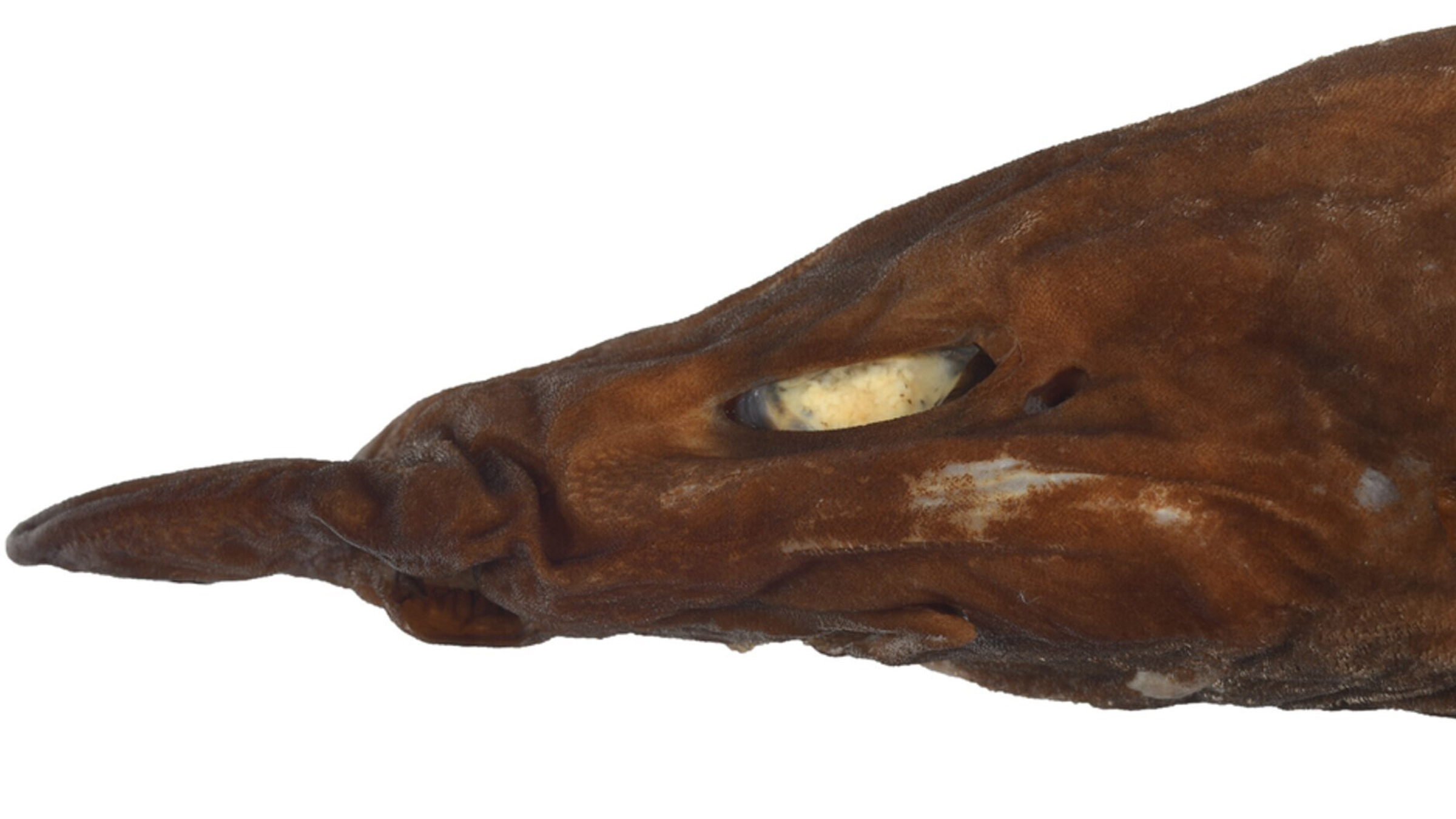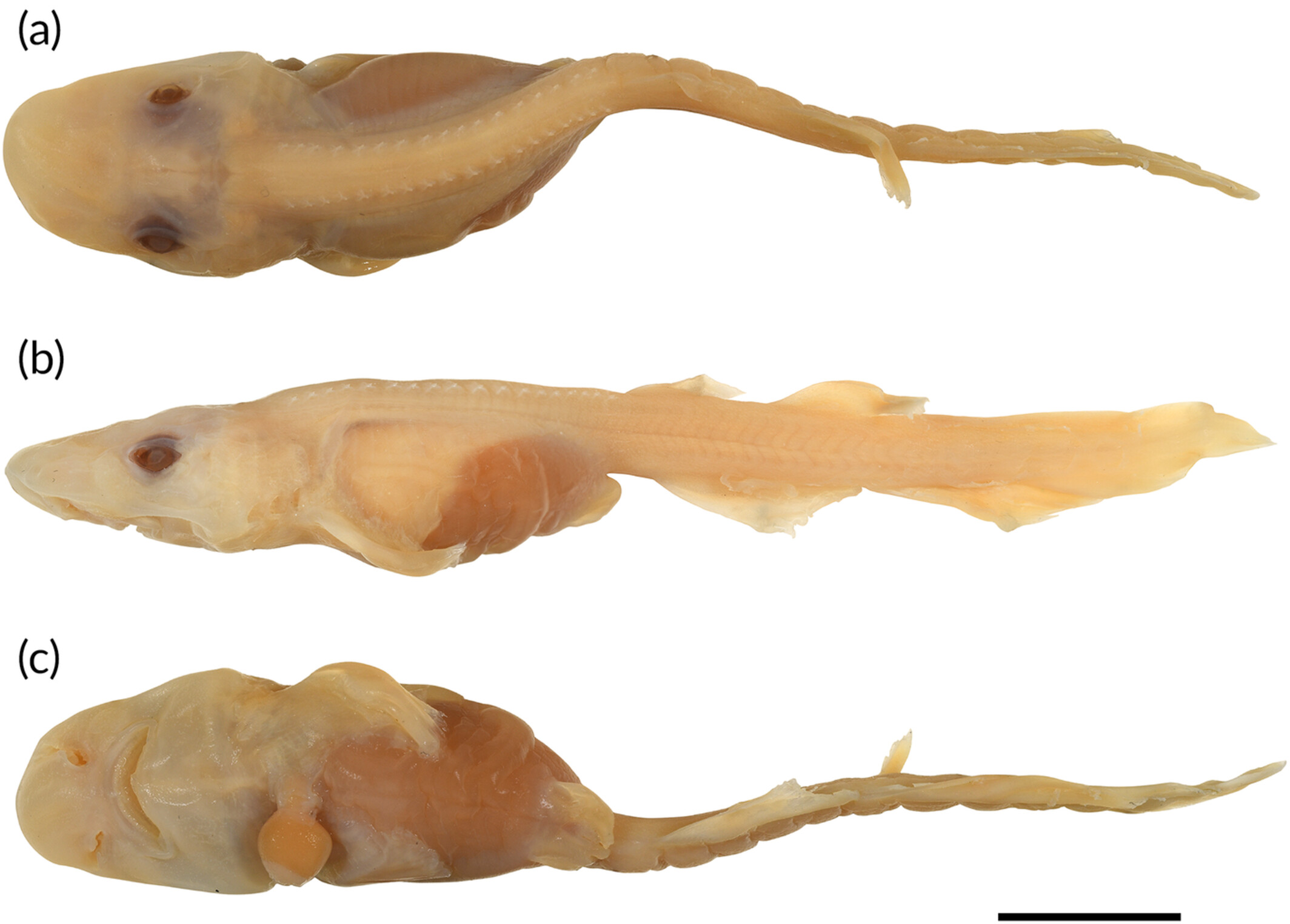Weird demon shark with bright white eyes discovered off Australia
The shark Apristurus ovicorrugatus was identified as a new species over a decade after the first mystery egg cases were found in a Western Australian museum collection.

A new species of deep-sea shark with bright white eyes has finally been identified, decades after a dead pregnant female of the species was first collected off the coast of Western Australia. The "ghost" shark was initially misidentified, and was only pegged as a new species after scientists took a second look at its bizarre egg cases that had languished in museum storage for years.
The newfound species, which was described in a new study published April 23 in the Journal of Fish Biology, has been named Apristurus ovicorrugatus, which is derived from the Latin for egg, "ovi," and "corrugatus," meaning corrugated, in reference to the corrugated egg cases that led to the species' discovery.
Along with its unique egg cases, A. ovicorrugatus also possesses unusual, shiny white irises.
"This is not a common feature for a deepwater species and only one other species, Apristurus nakayai from New Caledonia and PNG [Papua New Guinea] shares this character," study lead author Will White, an ichthyologist with Commonwealth Scientific and Industrial Research Organization (CSIRO), told Live Science in an email.
Related: Critically endangered hammerhead shark found dead on US beach was pregnant with 40 pups
Apristurus is a genus of catshark. They are commonly known as ghost or demon catsharks. It is one of the most diverse shark genera in the world, with around 40 known species.
While the majority of shark species give birth to live young, the rest are oviparous, meaning they lay eggs. The egg cases — also known as mermaid's purses — often have long tendrils that allow them to attach to seaweed or rocks.
Get the world’s most fascinating discoveries delivered straight to your inbox.
In 2011, researchers came across an extremely strange egg case containing a shark embryo. It was clear the shark belonged to the Apristurus genus, but the egg case did not match any known species.
For over a decade, the egg case remained a mystery, until scientists found two more sitting in the Australian National Fish Collection, which falls under the CSIRO umbrella.
"The egg cases possessed very distinctive longitudinal ridges on their surfaces which were T-shaped in cross-section," White said. "Only one other species in the world has been found to have egg cases with that form of ridging and that is a different genus entirely."
White and his colleagues then trawled through their collection database to see if any other unidentified Apristurus specimens had been found in the small region where the egg cases had been collected. They eventually found the pregnant female: a 1.5 foot-long (46.7 centimeters) shark that had been misidentified as a South China catshark (Apristurus sinensis).
The female was carrying a single egg case — and it matched the one they'd found a decade ago.
"Luckily the female specimen we found contained an identically ridged egg case and confirmed our suspicions," White said.
Researchers say the discovery of A. ovicorrugatus highlights the importance of egg case shape to identifying species. In Australia, members of the public are invited to upload images of egg cases to a global database, allowing scientists to better understand where egg-laying sharks are breeding. The A. ovicorrugatus egg cases were found attached to corals, suggesting the species may rely on these organisms for reproduction.
Going forward, White and colleagues are scouring museum collections for more new species to see what else curators have overlooked or misidentified.

Hannah Osborne is the planet Earth and animals editor at Live Science. Prior to Live Science, she worked for several years at Newsweek as the science editor. Before this she was science editor at International Business Times U.K. Hannah holds a master's in journalism from Goldsmith's, University of London.





